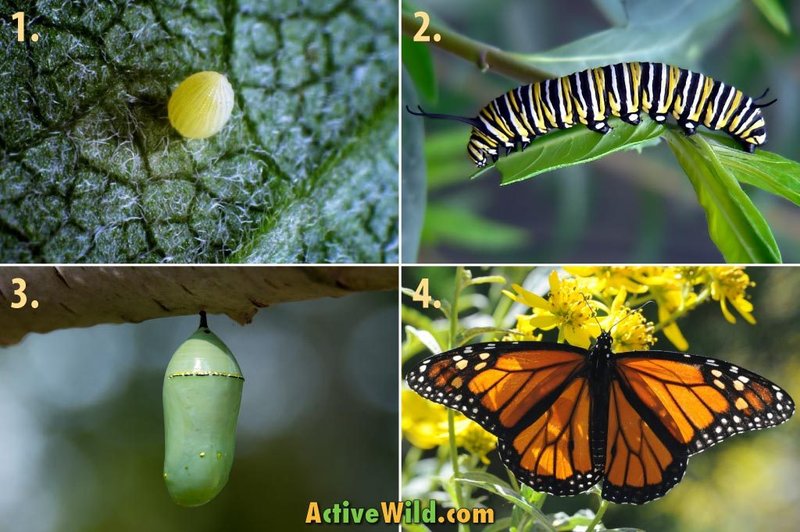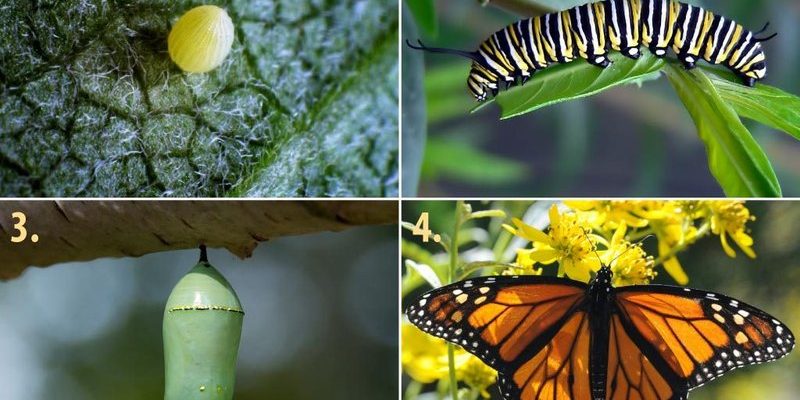
To understand this transformation better, let’s take a closer look at each stage of the butterfly’s lifecycle. Think of it as a story with four distinct chapters, each playing a vital role in the development of these enchanting creatures. Whether you’re planning to start a butterfly garden or just curious about how this incredible process works, I’ll guide you through it step by step.
1. The Butterfly Egg
The journey of a butterfly begins as a small egg, often nestled on the underside of a leaf. These eggs are usually round or oval and can range in color from green to yellow, depending on the species. Here’s an interesting tidbit: female butterflies are quite particular about where they lay their eggs because the baby caterpillars (or larvae) will need the right plants to munch on once they hatch.
Once the eggs are laid, they might take anywhere from a few days to a couple of weeks to hatch, depending on the butterfly species and environmental conditions. During this time, the egg is developing, and once it’s ready, a tiny caterpillar will emerge. Can you imagine being a baby caterpillar, breaking free from a cozy little shell? It’s like waking up in a whole new world!
2. The Caterpillar Stage
After hatching, the tiny caterpillar is hungry—really hungry. This stage, known as the larval stage, is all about eating and growing. Caterpillars primarily feast on leaves, and some can eat almost their body weight in food daily! As they munch away, they also go through several molts. This means they shed their skin to accommodate their growing bodies.
Caterpillars come in various shapes, colors, and patterns. Some are bright and bold, like the Painted Lady caterpillar, while others might blend into their surroundings. This is a survival tactic, helping them avoid predators. So, while they may appear to be munching lazily on a leaf, they’re also on high alert for any potential danger.
Let’s be real—caterpillars are not the most graceful creatures. They might wobble around or even look a bit silly, but it’s all part of their journey. As they grow, they’ll eventually reach a point where they’re ready to transition to the next stage.
3. The Pupa (Chrysalis) Stage
Once a caterpillar is fully grown, it finds a safe place to form a pupa, commonly known as a chrysalis. This is where the real magic happens. The caterpillar’s body begins to break down, and its cells reorganize. Instead of just growing, it’s actually transforming. It’s like the ultimate makeover!
During this stage, which can last from a few days to several weeks, the caterpillar is quite vulnerable and doesn’t eat. It’s a time of complete reformation. When you peek at a chrysalis, you might see some slight movement inside, but it’s usually hidden from view. It’s as if nature is keeping a secret until the big reveal.
The process inside the chrysalis is extraordinary. The caterpillar’s cells begin to change into wings, legs, and other adult structures. It’s amazing to think that this tiny, grounded creature is soon going to take flight as a beautiful butterfly.
4. The Adult Butterfly Emerges
Finally, the moment arrives! When the butterfly is fully developed, it breaks free from the chrysalis. This is often the most breathtaking part of the lifecycle. At first, its wings are crumpled and wet, making it look a bit frail. But give it some time. As the wings dry, they expand and become vibrant and colorful.
Once the butterfly is ready, it takes its first flight. Honestly, it’s a sight to behold. Imagine feeling the sun on your wings for the first time and exploring the world you’ve just emerged into. Adult butterflies typically live for a few weeks to several months, depending on the species. They spend this time feeding on nectar, mating, and, of course, continuing the cycle by laying more eggs.
5. The Importance of Butterflies
Butterflies are not just pretty to look at; they play a vital role in our ecosystem. They are significant pollinators, helping plants reproduce by moving pollen from one flower to another. This process is crucial for creating fruits, vegetables, and seeds. Without butterflies, our food supply would be greatly affected.
Additionally, butterflies serve as indicators of a healthy environment. Changes in their populations can signal ecological changes, reminding us about the importance of conservation. Protecting their habitats helps ensure they thrive, which in turn supports the entire ecosystem.
So next time you see a butterfly fluttering by, remember that there’s a remarkable story behind its existence—a story that involves dedication, transformation, and a little bit of magic.
6. Fascinating Facts About Butterflies
Here are a few fun facts that you might find interesting as you learn more about these incredible creatures:
- Butterflies taste with their feet: Yes, you read that right! They have taste sensors on their feet, which help them find out if a plant is suitable for laying eggs.
- There are over 17,500 species: Butterflies come in all shapes, sizes, and colors, with thousands of species found around the world.
- Some migrate long distances: Monarch butterflies, for example, travel thousands of miles during their annual migration to warmer climates.
- Butterflies can see UV light: This unique ability helps them spot flowers that we might not see, guiding them to the best nectar sources.
7. How to Encourage Butterflies in Your Garden
If you’re feeling inspired to support these beautiful creatures, consider creating a butterfly-friendly garden. Here’s how you can attract them:
- Plant native flowers: Choose plants that are native to your area. Butterflies love nectar-rich flowers like milkweed, coneflower, and butterfly bush.
- Provide shelter: Create a safe space for butterflies to rest by planting shrubs or providing small structures they can hide in.
- Avoid pesticides: Be mindful of chemicals that can harm butterflies. Opt for natural pest control methods instead.
- Add a water source: Butterflies need water too! A shallow dish with clean, fresh water can help keep them hydrated.
Creating a butterfly garden not only enhances your outdoor space but also supports these essential pollinators and their lifecycle.
8. Conclusion: The Butterfly Lifecycle and Its Beauty
The lifecycle of a butterfly, from egg to adult, is truly a remarkable journey of transformation. Each stage, from the delicate egg to the vibrant butterfly, tells a story about resilience and adaptability. Learning about these stages helps us appreciate the beauty of nature—and reminds us to be stewards of the environment.
Next time you see a butterfly, take a moment to admire its beauty and remember the incredible journey it undertook. And who knows, with a little effort in your garden, you might just inspire a new generation of butterflies to take flight right in your backyard!

